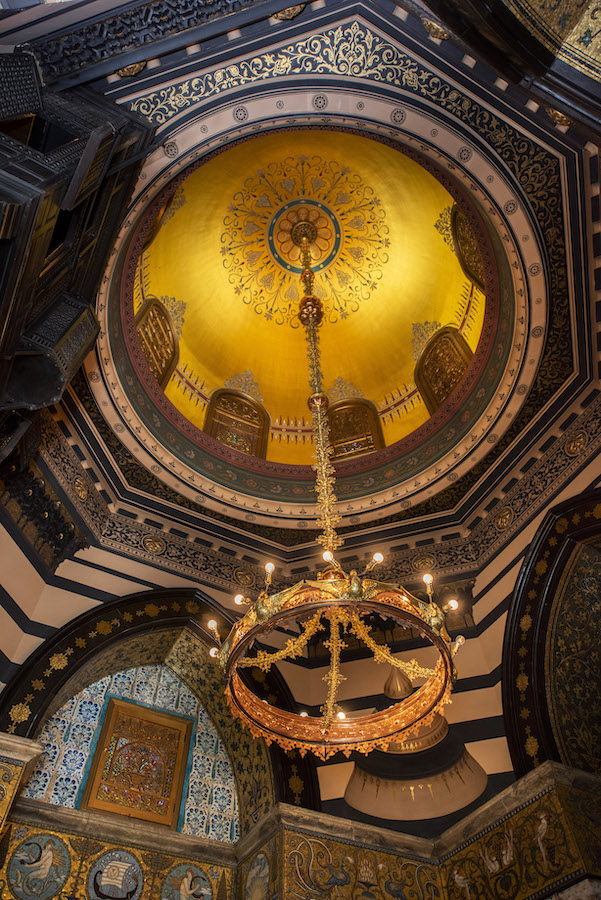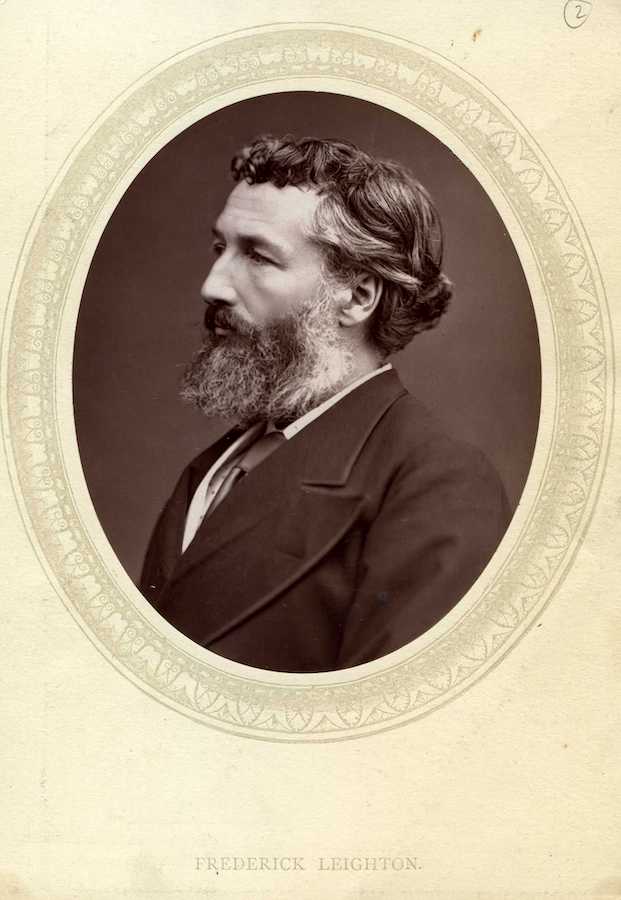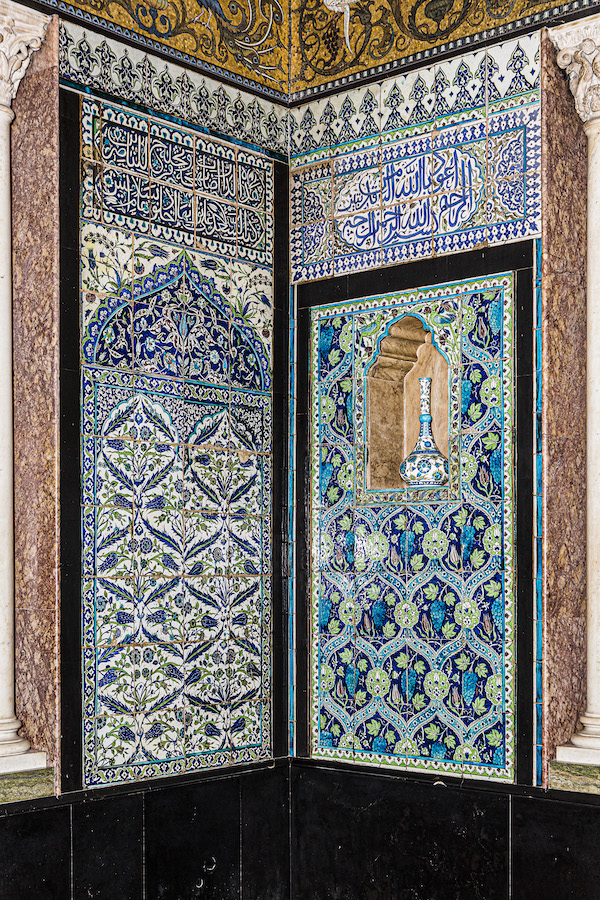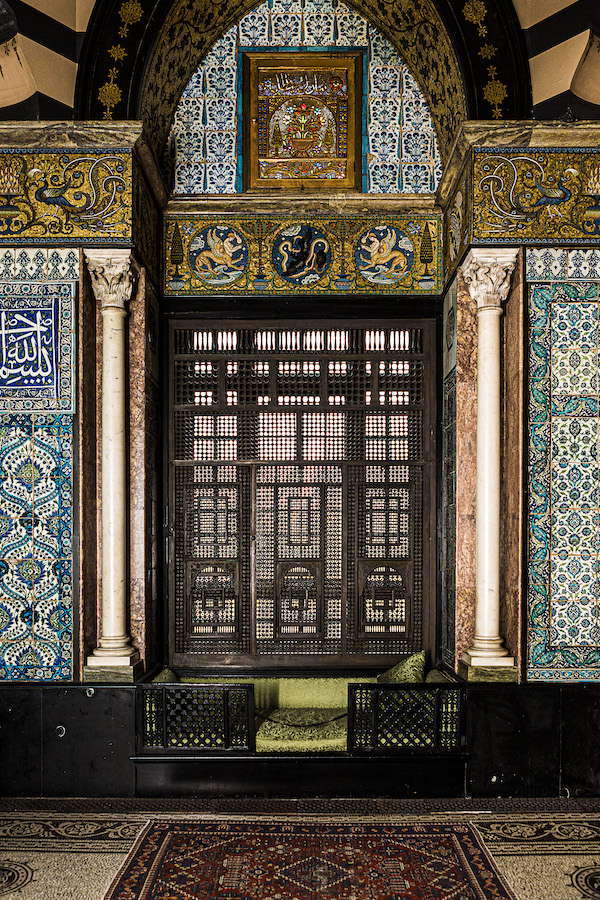DUBAI: The Arab Hall in London’s Leighton House Museum has been described by one of the English capital’s walking-tour guides as the city’s “most jaw-dropping room.” The story of this sumptuous space begins with one of the Victorian era’s most-distinguished artists and travelers, Lord Frederic Leighton, who was only in his mid-thirties when he started building his red-brick house and studio in the Kensington neighborhood in 1864.
Leighton, raised and educated in continental Europe, was making a name for himself in the British art world at the time. He was an associate (and later president) of London’s Royal Academy of Arts; his work was purchased by royalty; and he sold his “Dante in Exile” picture for a then-handsome sum of more than £1,000 (equivalent to around $184,000 today, according to the CPI inflation calculator). It is believed that this boost to his finances pushed him to create what he famously called his “private palace of art.”
The two-story house was designed by architect George Aitchison. For more than 30 years, until Leighton’s death in 1896, the sophisticated house was an evolving project, featuring a library, a dining room, a grand staircase, a blue ‘Narcissus Hall’ and an impressive studio drenched in natural light. The only ‘private’ part of the house was Leighton’s simple bedroom, accommodating a single bed.

Golden dome and brass gasolier, Arab Hall, Leighton House. (Supplied)
“His house was not designed in a day or built in a year,” observed the journalist Harry How in 1892. “It has been the work of years; bit by bit it has become more beautiful; its owner has watched it grow up almost as a father does his boy.”
Every room had a purpose, and each was furnished with mementos from his travels, patterned fabrics, and classical revival paintings. It’s a domestic setting that reveals the artist’s refined taste and worldly personality but there is also a showy element.
“It’s in part an artistic expression, but it is also an ambitious thing for a young artist to make the statement that they are building this bespoke studio-house,” Leighton House Museum’s senior curator Daniel Robbins told Arab News. “It was a way of using your house as a means of projecting an idea of yourself in quite deliberate ways.”

Frederic Leighton, RBKC, Leighton House. (Supplied)
One room in particular has been crowned the star of Leighton’s house: the Arab Hall. “It was always commented on that the exterior of the house was relatively plain and didn’t give away the richness of the interiors, and that still is the case,” said Robbins. “People will come into the house and have no idea that the Arab Hall is there. So when they discover it, it never ceases to amaze them. If people know Leighton House, the one thing they’ll know it for is the Arab Hall.”
Construction on the Arab Hall commenced in 1877, inspired by ‘La Zisa’ (or ‘Al-Aziza’ in Arabic) — an ancient Arab-Norman palace in Palermo, Sicily. Both Leighton and Aitchison were drawn to its honeycombed wall niches, golden mosaics and fountains. Leighton’s Arab Hall turned into an intimate oasis, with walls of visually stunning tiles imported from Syria, Iran, and Turkey and a shimmering mosaic frieze depicting vines, deers, birds, flowers, mythical figures, over which looms a majestic golden dome. “That’s the thing that will stay with people the most — the intensity of that color,” Robbins said of the tiles’ signature peacock-blue and turquoise tones.
Arabic calligraphy is an integral aspect of the tiles, featuring verses from the Qur’an. Although some of them have been swapped around, disrupting the flow. “His response to the material was absolutely an aesthetic one. There’s no evidence that he had any scholarly interest in it,” explained Robbins, who has been at the museum for nearly 20 years.

Leighton’s Arab Hall, RBKC Leighton House Museum. (Supplied)
The Arab Hall was almost certainly unique in London at the time. It is a testament to Leighton’s great interest in the Middle East. His first trip to the region, in 1857, took him to Algiers. “This visit made a deep impression of me; I have loved ‘The East,’ as it is called, ever since,” he wrote of that visit. Over the following decades, Leighton sketched views of the Nile in Egypt and roamed the old quarter of Damascus. Coming full circle, Leighton returned to North Africa a year before his death in the hope that a warmer climate would help him recover from heart problems.
“On all of these trips, he was gathering knowledge and experiences of different interiors and architecture that collectively led to the Arab Hall,” said Robbins.
Traveling to the region became easier for well-off Victorians in the 19th century, but it remained largely unknown in several regards. “A lot of their perceptions fall into that kind of orientalist category of considering the region as untouched by time,” said Robbins. With the completion of the Arab Hall in 1881-2, Leighton’s House was the talk of the town’s cultural elite. Fellow painters and curious journalists were dazzled by it; Queen Victoria came to see it, as did George Eliot; and Edward Burne-Jones and James McNeill Whistler both dined there.

Leighton’s Arab Hall, RBKC Leighton House Museum. (Supplied)
“It’s probably no exaggeration to say that all the prominent figures in London society at that time would have been to the house,” said Robbins.
But there were also those who felt that both the house and Leighton himself were more about style than substance.
“People who didn’t like Leighton, of his contemporaries, said that there was something artificial about him, that he always seemed to be performing,” Robbins explained. “You never really felt that you got behind that performance to really get to know him.”
The museum is currently undergoing refurbishment plans, set to be completed by the summer. Visitors can expect a new garden café, a shop, exhibition and learning areas, disabled access, and a mural by Vancouver-based artist Shahrzad Ghaffari, celebrating the theme of oneness.
With its blend of East and West, the Arab Hall can be viewed with a different kind of interpretation in today’s world — encouraging, as it does, cultural inclusivity. In recent years, the museum has hosted a series of films by Syrian directors, and showcased Afghan craftsmanship.
“We had a project with immigrant children who were brought to the house and it was fantastic to see their surprise to find something that was recognizable and felt familiar,” said Robbins. “There’s a sense of identifying with it and, I think, a sort of pride. In that context, it means something to them and is appreciated by so many people.”












